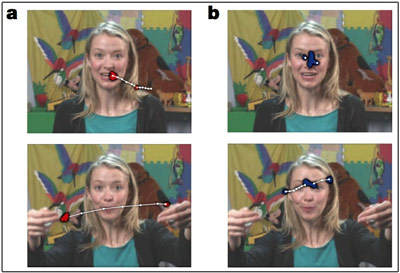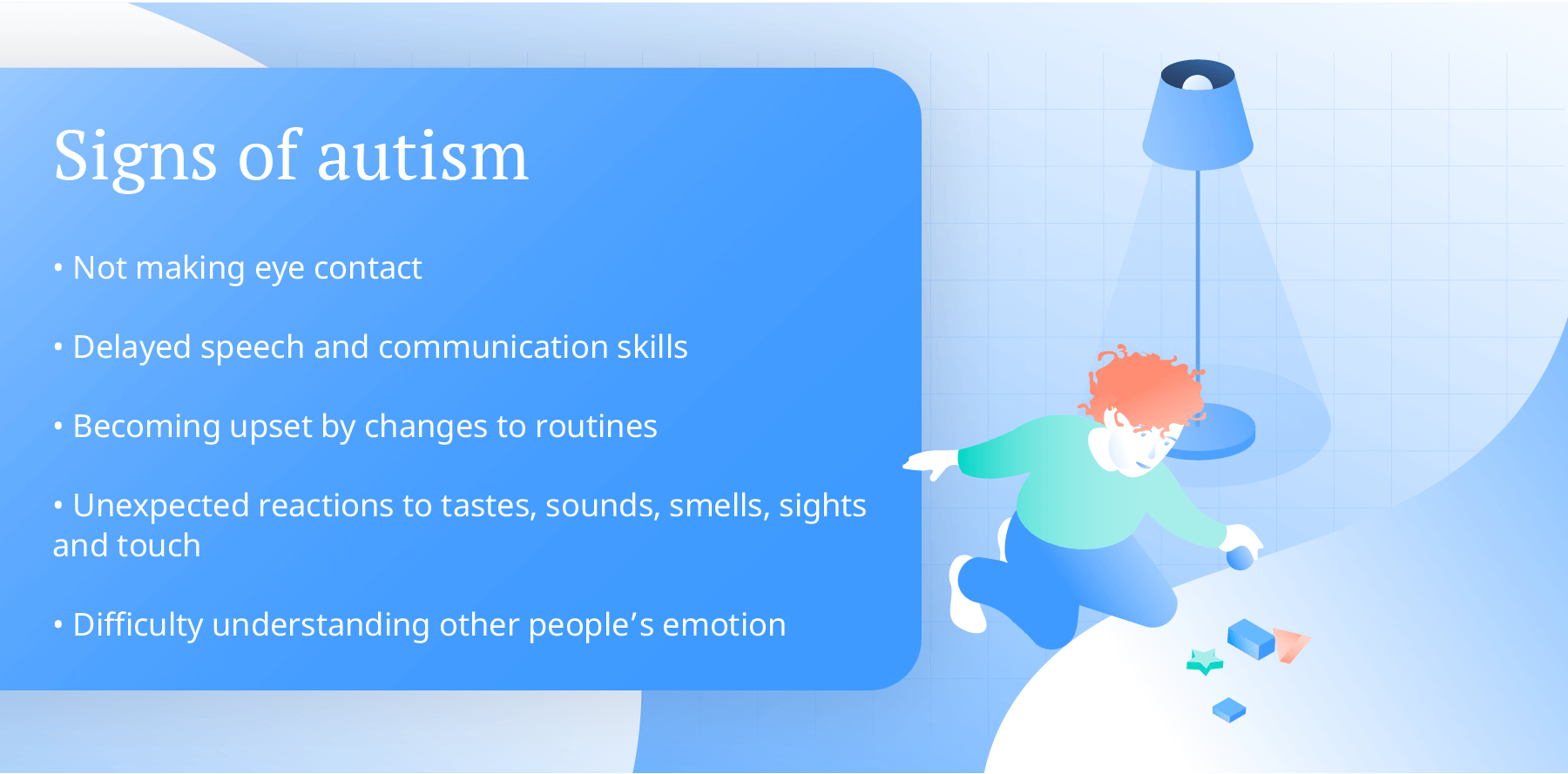is putting things in mouth a sign of autism
We want to speed up research and advance the understanding of autism. Children with pica often eat things like paper plants plastic or stones.
Tip How To Prevent Your Child With Autism From Biting Chubuddy Llc
Learn more about the signs that may reveal you have an Issue that need attention.

. When Oral Stimming causes an issue. Putting hands body parts or objects in their mouth. Stimming is a frequent symptom of autism.
Casually mentioning that someones newborn looks like a potato cross. Other repetitive behaviors include hitting oneself humming not humming a tune but humming for the sake of making noise making clicking noises snapping clapping inappropriately pacing or making other repetitive motions. This can be extremely dangerous as kids often eat or mouth things that are either unsanitary unhealthy in some way or even objects that are sharp that could potentially lead to internal injuries.
Though many times oral stimming can be a good thing sometimes it can cause a problem. For taste texture temperature wetness and dryness movement in the jaw and in the tongue for instance and so on. Older babies who are later.
Both are very common among people who have autism. 1 Autistic stimming is usually more extreme. Ad Discover 7 Signs You Should Recognize If Your Child Has Autism.
Putting items into his mouth playing with his saliva and walking on his toes most likely gives him sensory input. Try crunchychewy foods during meal and snack times. The most common is sensory feedback.
Harder to chew foods can help give the input a child is looking for. This kind of sensory stimulation may be similar to other autism-related behaviors such as spinning or looking at lights. Think carrots apples pretzels etc.
Some children with autism and oral fixation wind up chewing on items that are not safe. Fixation on unusual objects. In other words these behaviors feel good.
Recent research is changing the way that medical professionals are viewing ASD. These behaviors help them take control of their uncontrolled sensory responses. The chemical receptors in the babys nose serve to.
We share three things you can do to keep this behaviour under control as well as two play activities that can help your child with their behaviour. It may feel as if he cannot satisfy the need causing him to continuously have something in his mouth. The mouth has many sensory receptors.
Bitter receptors are located at the back of the tongue to give warning not to swallow and to expel dangerous or poisonous substances. If i put a mum mum cookie in her hand. The tongue is almost ready-made for exploration with more sweet receptors on the tip to guide the mouth toward high calorie and readily energizing sweets.
It is often the most obvious symptom. Ad Learn More about why you should do something about this. Hi sorry to hear about this.
Children on the autism spectrum often use mouthing the same way they use hand flapping finger twisting rocking and other forms of sensory self-regulation. But three fairly common issues tend to contribute to pica in those with autism. She suggests giving your son a vibrating.
Chewing on things can be a form of repetitive behavior. About 70 of autistic people have some degree of. While chewing on a piece of gum may satisfy a need to chew with someone who doesnt have autism it is not enough for many who have autism.
Foods that are crunchy or chewy can be really great options for snacks and lunch. Sandy Horna Physical Therapist explains that your son is most likely mouthing items because he is seeking sensation that his central nervous system is not providing to his mouth. This is one of the most common early warning signs of autism.
Tia often puts objects in her mouth such as food toys or sticks and leaves. The habit of swallowing non-food items is called pica. The individual enjoys the feeling of eating certain non-food items.
Many children with autism demonstrate difficulties processing sensory information. It can be a worry when young children put everything they shouldnt into their mouths. Im glad to share some of my insights as an occupational therapist who frequently works with families whose children have this dangerous tendency.
Learn more about the signs that may reveal you have an Issue that need attention. Autism affects about two out of every 1000 children in the US and symptoms usually develop before age three. The traditional held view that autism is a mental health issues is being challenged by new information about alterations in biochemistry and physiology in children with autism.
Could my child have autism Ten signs of possible autism-related delays in 6- to 12-month-old children. Just like sniffing mouthing and licking might be another way for an ASD child to explore the world around them. Offer the spoon but dont put it in babys mouth.
Stimming doesnt always indicate autism. It differs from typical stimming in the type quantity and obviousness of the behavior. Tapping your pencil biting your nails and twirling your hair are all examples of stimming.
Can I just say that this can just be normal child hood behaviour my 5 year old was an absolute nightmare for putting anything and everything into her mouth when she was 2-3 but yet shes the NT out of my 3 daughters. When properly directed it can be a great resource. It may feel as if he cannot satisfy the need causing him to continuously have something in his mouth.
The heavy input given by chewing on things helps to calm our overstimulated nervous system. This is one of the most common early warning signs of autism. It can also be a comforting habit.
This child is hyposensitive to oral stimulation. A child lines up toys in the same order over and over again with no apparent meaning to the chosen order But Im guessing non-autistics may be a little surprised Ordering things does not necessarily indicate a lack of imagination lining things up is not a definite sign of autism and though it may be an early sign for Autism and thats okay. Many kids with autism exhibit Pica behavior which means they mouth chew on or ingest things that arent edible.
Avoiding touching paint gooey food or glue or interpreting the touch of a hair. 1 Most people stim in subtle ways. Smelling or licking objects.
The term tactile defensive refers to one symptom of sensory integration dysfunction in which the person finds touch aversive 2Signs of tactile defensiveness may include. This is a common behavior among kids with SPD andor autism and there are many ways to address it.

Stimming The Good And Bad Side Of Anxious Behaviours

Sensory Processing In Children With Autism Licking Behavior

Classic Sign Of Autism Appears In Early Infancy Study Says Spectrum Autism Research News

Social Narrative Is Okay Or Not Okay To Put In Mouth For Special Education Social Stories Social Stories Autism Social Skills Autism

Is Tongue Thrust A Sign Of Autism Santa Cruz Scotts Valley Ca

Why Do Kids With Autism Do That

Sensory Processing In Children With Autism Licking Behavior

Autism And Licking Behavior Lovetoknow

Autism 9 Warning Signs Every Parent Should Know

Analyzing The Mealtime Behaviors Of Children With Autism Noldus

Autism Chew Toys Guidance On Sensory Chew Toys Pingree Center

Signs Your Child Is On The Autism Spectrum Jake S House

My Asd Child Oral Sensitivity In Children With Aspergers And High Functioning Autism

Why Does My Older Child Chew On Everything Childhood Behavior Sensory Disorder Sensory Therapy

Is It Autism Facial Features That Show Disorder

Mouthing Objects Association For Science In Autism Treatment

Pica And Autism Mouthing Of Things In Children Autism Mom Aba Help For Professionals And Parents

